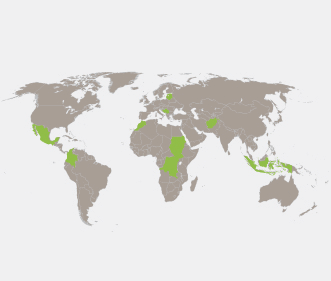Small arms proliferation is potentially the greatest security threat facing Kenya, and perhaps the East African region as a whole. Under mounting pressure to respond to the threat and maintain security, Kenya’s National Assembly will soon make a decision on modernizing its small arms and light weapons (SALW) legislation.
A conservative estimate of SALW possession in Kenya is in the range of 530,000-680,000 firearms. The surge in violence that has accompanied the proliferation is beginning to look more and more like a small-scale conflict, as opposed to ordinary gun violence. Tribal groups and pastoralists in rural areas have been arming themselves heavily, claiming the government is unable to provide security. Not surprisingly, counties most affected by armed violence and proliferation of small arms and light weapons are also, historically, the most insecure, such as Turkana, Samburu, Garissa, and Tana River.Even soldiers and other members of the security forces have been targeted and killed. In November 2012, cattle rustlers killed 40 soliders in Suguta Valley, Baragoi. Two months prior, nine police officers were ambushed and killed in the Tana Delta region.
Part of the challenge in responding to the issue is Kenya’s outdated legislation, which has been left in the proverbial dust by modern security challenges such as piracy, terrorism, and small arms proliferation. The Firearms Act became law in 1954, and has not been updated since. Many issues, such as civilian possession of weapons such as the AK-47 and other powerful yet light weapons were not of major concern when the bill entered into effect. As John Ochieng, the Deputy Director of the Kenya National Focal Point on Small Arms and Light Weapons (KNFP), puts it, “issues of firearms as we know are very dynamic.”
Relatively few details about The Small Arms and Light Weapons Control and Management Bill are currently available, but some media sources in Kenya have released details. It was drafted as a joint venture between branches of the Kenyan government and civil society actors — with the United Nations Development Programme as a key sponsor.
One of the more noteworthy components of the legislation is a general increase in penalties for SALW possession. Currently, sentences for such crimes frequent the range of two to three years. Penalties under the new law would be much harsher. For example, failure to secure a firearm so as to prevent injury or threat to a third party would carry a prison term of “no less than 18 months.” Harsher still, anyone who lends their firearm to another could be face a fine of Sh 10 million (approx. US$ 114,000) and seven years in prison.
The Bill will replace the Firearms Act, as well as consolidate several other pieces of legislation in order to streamline Kenya’s policy on the matter. It will also seek to transfer responsibility for issuing firearms authorization from the police department to a multi-agency board whose members will be drawn from the police, military, intelligence services, and the KNFP.
The KNFP is “strongly urging” the National Assembly of Kenya to approve the new legislation in order to “address the weak points in the proliferation of arms into the country.” KNFP Deputy Director Ochieng has stated that the bill was supposed to be ready for review by the National Assembly in December 2012, with the bill’s review and approval following shortly thereafter. However, the bill did not appear before the Assembly before the end of the parliamentary session in January.
Around the same time, the KNFP also finished work on a draft national policy on SALW, which was heavily influenced by regional actors, and will contribute to Kenya’s implementation of the United Nations Program of Action on Illicit Small Arms and Light Weapons (UN PoA) and the Nairobi Protocol on the Prevention, Control, and Reduction of Small Arms and Light Weapons in the Great Lakes Region, the Horn of Africa, and Bordering States. These international and regional initiatives provide for the establishment of best practices for disarmament, harmonization of regional legislation, public awareness and advocacy, and the destruction of illicit SALW. Cooperation from regional partners to these initiatives is crucial to Kenya’s success in combating small arms proliferation.
The government’s response to the violence and the ultimate chances of reducing SALW proliferation in the region are complicated by a few major problems. Countries in the region suffer from porous borders enabling smugglers to change their routes almost at will; many also travel through multiple countries before reaching their destination. Perhaps worse still, Kenya shares a 1,000-kilometre border with Somalia, the world’s archetypal failed state.
Compounding the problem, border policing in Kenya is a disjointed and seemingly uncoordinated venture. It is currently a joint effort between most of the country’s security agencies; the Kenyan Army, the Rural Border Patrol Unit of the Administration Police, immigration officials, intelligence officers, and anti-terrorism police. Officials have recently announced plans to acquire unmanned aerial vehicles to enhance border protection.
Undoubtedly, more details regarding the Small Arms Bill will be released once the legislation comes under review by the National Assembly, giving a clearer picture of the legislation’s chances for success. With any luck, the changes will make disarmament that much more achievable.
Chris Bordeleau is a Reserach and Communications Intern with the Security Governance Group.
Tags: Firearms Act, kenya, SALW, small arms






 Visit the Centre for
Visit the Centre for